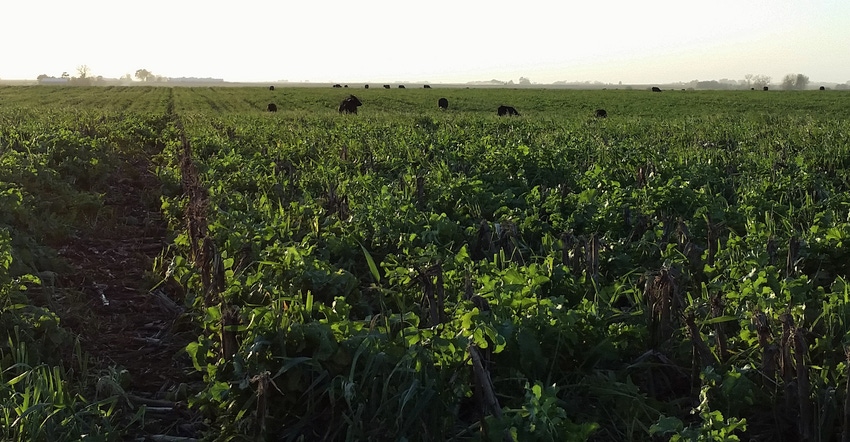October 11, 2018

Cereal rye is a common feed used in cow-calf production. Now being grown on more farms each year as a cover crop, this grass extends the grazing season. It provides early spring forage and can also be used as an emergency area for spring calving during inclement weather.
Understanding how to grow cereal rye and best use the crop is the focus of a new Iowa State University publication titled "Grazing Opportunities with Cereal Rye" (IBC 0128). The three-page publication is authored by Beth Doran, Iowa State University Extension beef cattle specialist.
"Growing and using cereal rye is not without its challenges," she says. "But it has become the first choice of cover crops to graze because it grows rapidly and tolerates colder temperatures."
The publication provides best management practices for producers to use when grazing cereal rye with stocker cattle. Nine steps are listed for producers to think about and follow to grow cereal rye of the highest quality. Included in the publication are a pair of tables that show research on both the yield and nutrient density of cereal rye.
Growing and grazing cover crops
"A high level of management is involved in successfully growing and grazing cover crops," Doran says. "Whether it’s cereal rye or another cover crop, cattle producers need to consider five things: the crop that will be grown previous to growing the cover crop; the kind of cover crop to be grown; the crop that will be grown after the cover crop is terminated; the characteristics of the grazing animal; and last but not least, the weather."
Growing cereal rye can also provide added value for crop producers if they sell the cover crop as feed, or if they lease the cover crop acres to cattle producers to graze, or by temporarily grazing stocker cattle themselves.
"Even if you leave out the value of cereal rye as a feedstuff for livestock, cereal rye does benefit a crop producer," Doran says. "Cover crops improve soil health, improve retention of fertilizer nutrients in the field and keep them from running off into the creek, and cover crops also aid in weed control."
Source: Iowa State University
You May Also Like




